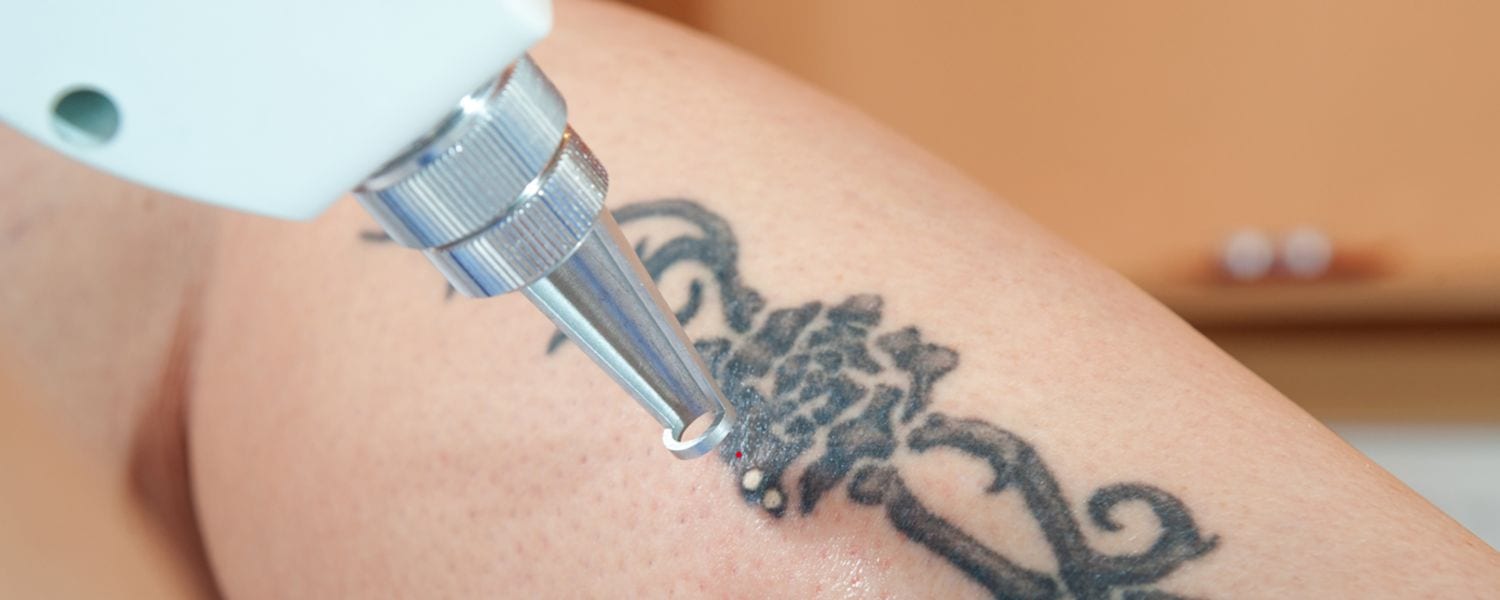Table of Contents
Tattoo Removal Service
The tattoo removal service involves getting rid of the skin’s permanent ink. Your doctor might advise a tattoo removal method, like laser therapy, if you have one you no longer want. Dermatologists can safely remove tattoos, but there could be complications, including scarring.
What is Tattoo Removal?
An artist injects inks and pigments (dyes) into your skin to create a tattoo, a permanent type of body alteration. This permanent ink can be removed from your body through a tattoo removal treatment. Since ink particles are too large for your immune system to remove, they remain in your body permanently. Normally, your immune system works to remove foreign particles from your body. Getting rid of a tattoo can be laborious and require numerous sessions. This occurs due to professional tattoos’ permanent ink particles remaining underneath the skin’s surface.
There are several ways of tattoo removal, but laser tattoo removal is the most popular. If you’re interested in removing an undesirable tattoo, speak with a dermatologist or healthcare professional to learn more about your removal choices.
How does tattoo removal operate?
Different tattoo removal methods operate in various ways. The purpose of tattoo removal is to reduce the size of the particles of permanent ink so that your immune system can eliminate them from your body without harm. This is how tattoo removal creams and lasers work, with less chance of leaving scars.
Removing skin or skin layers containing particles of permanent tattoo ink is the main goal of dermabrasion, chemical peels, and surgical excision. This enables the skin around a tattoo to heal so that it appears as though it was never there in the first place. It is usually scarring that results from this.
Does getting a tattoo removal hurt?
Depending on the tattoo removal method, there may be variable degrees of pain or discomfort. Some claim that getting a tattoo and removing it is the same experience, while others compare it to having a rubber band snap against their skin. Following the operation, your skin can be sore. Certain procedures are painful, so your surgeon may administer general anesthesia or apply or inject a local anesthetic into your skin.
Who can benefit from tattoo removal?
If you meet the following criteria, you may be a candidate for tattoo removal:
- You want to get a tattoo removed.
- Those who are in good health.
- You should not smoke.
- Set reasonable expectations for the procedure.
- Understand the treatment’s risks and potential side effects.
Why do people remove tattoos?
Everyone has various reasons for wanting to get rid of a tattoo. Among the most common reasons are:
- You no longer like your tattoo.
- You tattooed a significant other who is no longer around.
- Your workplace does not permit visible tattoos.
What are the types of tattoo removal?
There are numerous methods for getting rid of tattoos, including:
Laser Tattoo Removal: Laser tattoo removal uses concentrated light beams directed at your skin. Lasers heat the ink particles in your skin to break them up into smaller particles that your immune system can more easily eliminate. A tattoo can be removed through several laser therapy sessions.
Dermabrasion: Using a specialized instrument, the outer layers of your skin that contain tattoo ink are removed during this surgical surgery. For this surgery, you will require either a local or general anesthetic. Your skin will have an open wound that needs to heal after the surgery.
Chemical peels: Permanent ink can be removed from your skin using chemical peels that involve substances like trichloroacetic acid. Your skin will be treated with the chemical by a provider, which will cause the skin’s outer layers to flake off.
Surgical excision: A surgical excision is a process of cutting a tattoo from the skin. After removing the tattooed skin, a surgeon will sew your remaining skin together. Large tattoos don’t respond well to this technique, while minor tattoos do.
Tattoo removal creams: Tattoo removal creams are available, but they don’t work as well to get rid of tattoos as other treatments do. You can utilize tattoo removal creams at home by applying the cream to the skin where the undesirable tattoo is. Acids, which are commonly found in tattoo removal lotions, might irritate or harm your skin. It may take several months of consistently applying tattoo removal creams before you start seeing results.
How does a laser tattoo removal procedure work?
Before your procedure, you’ll visit a qualified, trained physician who will assess your condition and explain the procedure to you. They’ll examine your skin and might inquire about things like:
- What time did you obtain this ink?
- Have you had any previous tattoo removal treatments?
- Did a professional or amateur apply the tattoo?
To document the outcomes of your treatment, your technician will also measure the size of your tattoo and possibly take a photo of it.
Your technician will decide on a treatment strategy based on the tattoo’s type, colour, and degree of pigmentation in your body.
You can anticipate the following to occur during a laser tattoo removal procedure:
- You’ll put on safety goggles.
- The most efficient energy for the therapy is chosen after testing how your skin responds to the laser.
- The procedure is pressing a handpiece against your skin’s surface and repeatedly activating the laser light (in pulses) over the tattoo’s surface.
Larger tattoos require more pulses, while smaller ones need fewer. Both scenarios involve many visits for tattoo treatments. Each treatment should result in a lighter tattoo.
Your technician will provide instructions on how to take care of your skin following each session.




